Texas Residential & IDD Facility OSHA & Safety Compliance Guide
A Practical Guide to Safety, Licensing, and Risk Management Compliance for Texas Businesses

A Practical Resource for Health & Human Services and Care Facility Operators
Residential and IDD facility operators balance an extraordinary mission — protecting Texas’s most vulnerable citizens while managing safety, staffing, and regulatory demands.
At Eastman Insurance Solutions (EIS Texas), we understand that compliance is not just about meeting state and federal mandates — it’s about creating safe environments that empower care.
Our team helps facility leaders translate OSHA, HHSC, and CMS Life Safety Code regulations into actionable safety programs that reduce risks, protect employees, and enhance operational stability.
Explore Your Industry Compliance Portal
Below are the dedicated compliance resources curated by EIS Texas. Each section outlines federal and state-specific requirements, plus actionable risk management practices for your industry.
1. Core Regulatory Framework for Texas Care Facilities
Residential and IDD care providers must comply with multiple overlapping regulatory bodies:
| Regulatory Body | Focus Area | Resource |
|---|---|---|
| OSHA (29 CFR 1910) | Worker safety, ergonomics, bloodborne pathogens, workplace violence prevention. | OSHA Nursing Home & Residential Care Standards |
| HHSC (Texas Health & Human Services Commission) | Licensing, staffing ratios, emergency preparedness, infection control, life safety. | HHSC Health Facilities Regulation |
| CMS / NFPA 101 Life Safety Code | Fire prevention, building safety, evacuation routes, and maintenance of protective systems. | NFPA 101 Life Safety Code |
| Texas Department of Insurance (TDI) / OSHCON | Free consultation and workplace safety resources. | TDI OSHCON Program |
2. OSHA Standards That Apply to Residential Care Facilities
Residential and IDD care settings are regulated under General Industry Standards (29 CFR 1910).
These standards cover employee safety, chemical exposure, lifting practices, and infectious disease control.
Key OSHA Regulations
-
1910.1030 – Bloodborne Pathogens: Exposure control plan, sharps disposal, training.
-
1910.1200 – Hazard Communication (HazCom): SDS library, labeling, and staff awareness.
-
1910.132 – Personal Protective Equipment (PPE): Gloves, masks, gowns for direct care.
-
1910.22 – Walking-Working Surfaces: Slip, trip, and fall prevention.
-
1910.38 – Emergency Action Plans: Documented evacuation procedures, drills, and staff training.
Resource: OSHA Healthcare & Social Services Safety
3. HHSC Compliance & Life Safety Requirements
The Texas Health & Human Services Commission (HHSC) enforces extensive safety and operational standards for licensed residential facilities.
Common areas of inspection include:
-
Life Safety Code Compliance (NFPA 101)
-
Emergency Preparedness Plans (including natural disasters and power outages)
-
Fire Drill Documentation (monthly, per shift)
-
Infection Control Programs (PPE, sanitation, outbreak logs)
-
Staffing and Training Records (including CPR, first aid, and abuse prevention)
-
Medication Storage and Handling
Facilities must be ready for both routine and unannounced HHSC inspections, and violations may trigger corrective actions, fines, or license suspension.
Reference: HHSC Provider Portal
4. Workplace Safety Risks in Care Environments
A. Ergonomic & Lifting Hazards
Caregivers face one of the highest injury rates for musculoskeletal disorders in the U.S.
Mitigation Strategies:
-
Use mechanical lifts or transfer aids when possible.
-
Provide lift-assist training for staff.
-
Rotate job assignments to reduce repetitive stress.
B. Workplace Violence Prevention
Under OSHA’s General Duty Clause, employers must maintain a workplace free from known hazards — including resident or visitor aggression.
Prevention Steps:
-
Conduct threat assessments.
-
Train staff in de-escalation techniques.
-
Implement “zero tolerance” reporting procedures.
C. Infection Control
Facilities must implement written infection control programs that align with OSHA and HHSC standards.
Requirements:
-
Regular PPE training.
-
Exposure logs and incident documentation.
-
Isolation protocols for communicable diseases.
5. Documentation & Recordkeeping Essentials
All compliance programs should include:
-
OSHA 300, 300A, and 301 logs (work-related injuries).
-
Bloodborne pathogen exposure control plan.
-
Hazard communication and chemical inventory list.
-
Fire drill and evacuation logs.
-
Training records (initial and annual).
-
HHSC inspection and corrective action reports.
Resource: OSHA Recordkeeping Requirements
6. Residential Care Compliance Checklist (Texas)
Licensing & Operations
-
Valid HHSC license and facility classification posted.
-
Written emergency preparedness plan reviewed annually.
-
Up-to-date infection control and life safety documentation.
Employee Safety
-
Bloodborne pathogen and PPE training current.
-
Incident reporting and response protocols in place.
-
Ergonomic and lift-assist policies implemented.
Fire & Life Safety
-
Monthly fire drills documented per shift.
-
Fire extinguishers inspected and logged.
-
Evacuation maps posted in all common areas.
Documentation
-
OSHA logs (300, 300A) current and visible.
-
SDS library maintained and accessible.
-
HHSC inspection reports on file.
7. Integrating Compliance with Risk Management
EIS Texas partners with facility leaders to bridge compliance and insurance performance, offering:
-
Written safety and emergency action program development.
-
Workers Compensation analysis and loss prevention.
-
OSHA & HHSC documentation audit support.
-
Life Safety Code compliance mapping for insurance alignment.
-
Captive program consultation for larger multi-facility operators.
Service Area – Supporting Texas Care Providers
We serve Residential Care, Assisted Living, and IDD facilities across Texas:
Dallas–Fort Worth · Houston · Austin · San Antonio · Central Texas · East Texas · West Texas · Gulf Coast
From small private homes to regional multi-site providers, EIS Texas delivers compliance and risk guidance that meets both state inspection standards and insurance requirements.
